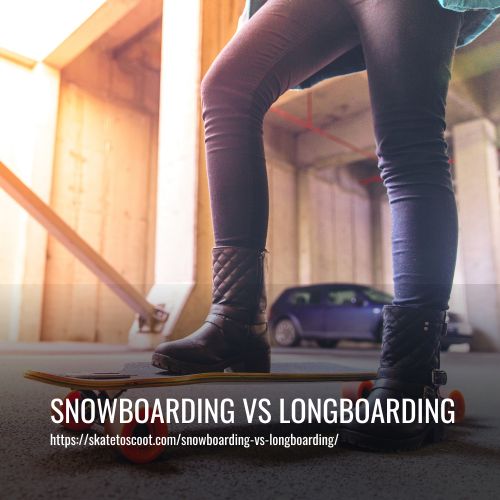As an Amazon Associate we earn from qualifying purchases.
Skateboard ramps come in a variety of materials, each providing different advantages and disadvantages. The main options are wood, metal, and plastic.
Wood ramps are considered an affordable option, but their portability or durability for heavy use may be limited. Metal ramps may be more expensive than wood, but they are also much more durable. Plastic ramps offer lightweight portability but may not be as strong as other materials.
The size of the skateboard ramp is an important factor to consider when selecting one. Ramps come in many shapes and sizes, ranging from small mini-ramps to large half pipes. Choose a size that is suitable for your skill level and fits in the space you have available to practice with.

What Makes a Good Skate Ramp
When it comes to choosing a skate ramp, there are a few key things that you should consider. It’s important to choose the right size of skateboard – not too big and not too small – for safety as well as comfort. In terms of materials, ramps can be made from wood, metal, or plastic – each with its own advantages and disadvantages when it comes to price, durability, and weight.
The angle of the ramp is also an important factor – a steeper angle will allow higher jumps while a shallower angle will make things easier to skate on. Lastly, the surface of the ramp should be even and smooth since bumps and dips could cause injuries.
If you weigh all of these factors in mind when looking for or building your skate ramp, then you’re sure to have a great time!
Types of Skateboard Ramps
There are a variety of types of skateboard ramps available for skaters to use. The most popular type is the half pipe, which usually has vert (vertical) or transition (inclined) walls. Vertical half pipes are best for performing stunts such as airs and grinds, while transition half pipes maximize speed and agility.
Bowl ramps are also widely used, as they have a shallow bowl shape with steep sides so they can be used on both the vert and transition. Mini ramps are smaller versions of bowl ramps that can be placed in tight spaces and are often used for practicing tricks or as warm-ups before skating on larger ramps.
Quarter pipes are another type of ramp that is only four feet tall and are used mainly for tricks in skate parks. Ledge ramps have flat surfaces with an edge protruding outwards and are commonly used for grinding tricks.
Lastly, gap jumps consist of two ramps separated by a space in between them, which can also be found in both skate parks and street skating locations.
What Type of Skateboard Ramp is Best
The type of skateboard ramp that is best for you depends on the kind of skating you plan to do. If you’re a beginner, it’s a good idea to start out with a small quarter pipe or mini ramp. These ramps are ideal for practicing basic skills and are usually relatively inexpensive.
More experienced skaters may opt for larger bowl ramps or half-pipes. These types of skateboard ramps can offer trick opportunities and bigger air off the transitions, but they often require more skill than smaller ramps.
What Type Of Wood Is Used For Skateboard Ramps
When building a skate ramp, the type of wood that you use is very important. The most popular choice is plywood, as it is strong and durable enough to withstand wear and tear from skateboarding. Not all types of plywood are created equal though, so be sure to do your research before purchasing.
Another option is OSB (oriented strand board). OSB has the same sturdiness and endurance as plywood, but it’s usually more cost-effective. Regardless of what type of wood you choose for your ramp, it’s highly recommended that you consult with a professional before beginning construction.
How Thick Should Plywood Be for Skate Ramp
It is important to make sure that you are using the right thickness of plywood. The right thickness of plywood depends on the type of skateboard you are using, the size and weight of the skater, and the speed at which you plan on skating.
For standard street skateboards, you should use plywood that is at least 3/8 inches thick. This thickness is strong enough to bear the weight of the skater, as well as any impact from tricks or falls. For larger and heavier skateboards such as longboards, use plywood that is at least ½ inch thick in order to provide more support and stability when navigating ramps.
High-speed skaters need additional support, so they should consider using ¾-inch thick plywood if they plan on skating really fast. This thicker plywood provides maximum support and stability, enabling them to skate with confidence even at high speeds.
What Plastic is Used for Skate Ramps
Skateboard ramps are most commonly made from a type of plastic called Densetec Ramp Board. This plastic is 25% lighter in weight, making it more economical than traditional HDPE and a popular choice for creating skate park ramps.
Furthermore, Densetec Ramp Board does not splinter, crack, delaminate, rot or absorb water – all of which can cause damage to your skate ramp over time. This means that you’re getting a high-quality plastic ramp that will last for many years to come!
Difference Between a Quarter Pipe And a Half Pipe
The quarter pipe and the Half pipe are both types of skateboarding ramps that are popular for vert competitions. The primary distinction between the two is their size when transitioning from the flat surface to the bowl.
The quarter pipe has a much smaller transition, making it more challenging for skateboarders; and its size also tends to be smaller than half pipes. On the other hand, a half pipe has a larger transition area, making it easier to skate on, as well as being taller than a quarter pipe.
FAQs
An effective way to make sloped surfaces more secure is by using anti-slip tape for ramps. This adhesive safety tape is durable, weather-proof, waterproof, and chemical resistant.
Constructing a good-quality halfpipe can cost several thousand dollars; however, if you want the best, it could be much pricier.
Kicker ramps are ramps with a flat surface that is sloped at an angle of 15 to 30 degrees relative to the ground and have no curvature.
Aluminum ramps from National Ramps are a great option due to their high durability, as they don’t rust or rot, and also provide the most friction for optimum traction. They’re strong, affordable, and safe.
If an aluminum ramp is exposed to intense sunlight, it can become quite hot!
When there is snow or ice on an aluminum ramp surface, it can be slippery, but aluminum ramps provide better traction than wooden ramps when wet.
Conclusion
In conclusion, skateboard ramps are made from a variety of materials, depending on their intended use. The most common materials include wood, metal, and plastic. Professional ramps may also be made out of concrete or other more heavy-duty materials.
Whatever the material, it’s important to make sure that your ramp is able to hold up to a lot of wear and tear while still providing the skater with an ideal surface for performing tricks. So before you start building or buying a ramp, make sure you do your research and choose the right material for your needs!
Amazon and the Amazon logo are trademarks of Amazon.com, Inc, or its affiliates.



